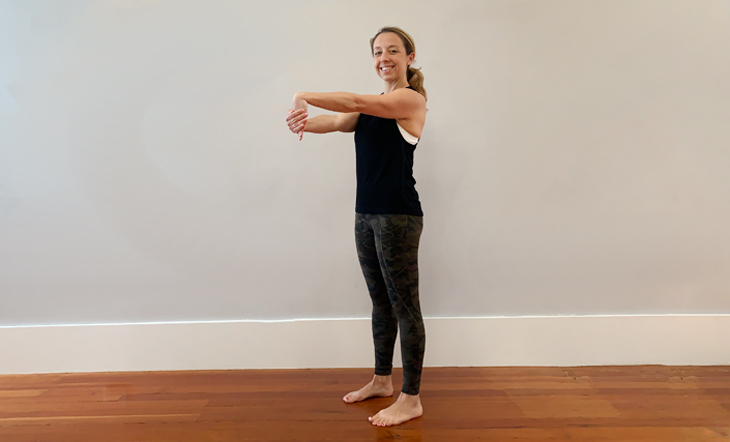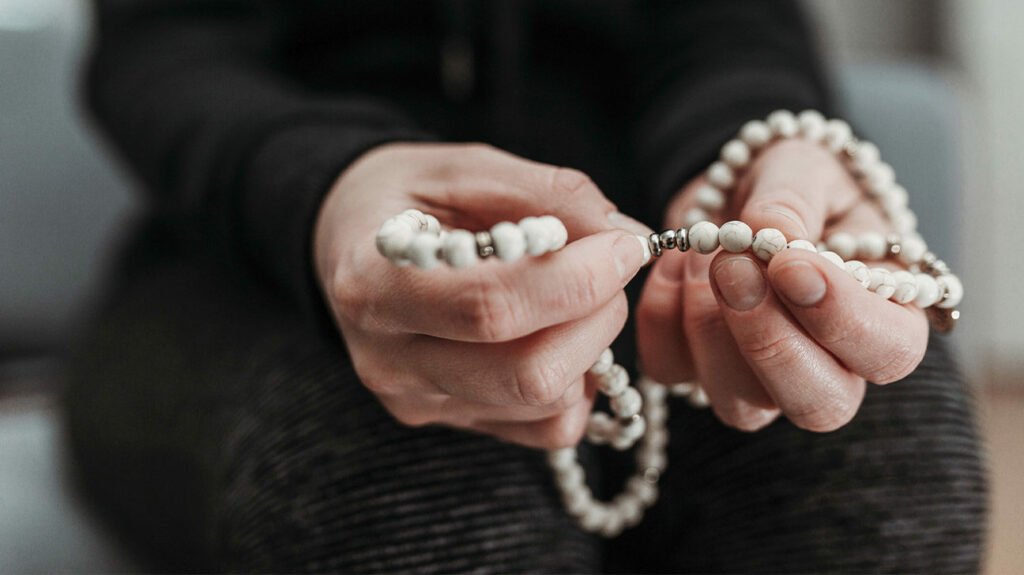Suffering From Elbow Tendonitis? Use This Yoga Sequence to Help Your Tennis Elbow
Elbow tendonitis is an inflammation of the tendons and tissues around the elbow and forearm. Medically known as lateral epicondylitis but often referred to as “tennis elbow,” elbow tendonitis is a common, painful injury that is a result of...

Elbow tendonitis is an inflammation of the tendons and tissues around the elbow and forearm. Medically known as lateral epicondylitis but often referred to as “tennis elbow,” elbow tendonitis is a common, painful injury that is a result of repetitive movements of the wrist and arm. Luckily, yoga for tennis elbow can help alleviate pain.
While athletes who play sports such as tennis, golf, or baseball may endure this type of injury, it also commonly occurs in those who put repetitive stress on their elbow joints throughout their daily lives.
Baristas, chefs, and hairstylists are just a few examples of jobs where the elbow joint may get inflamed from overuse.
What Exactly Is Elbow Tendonitis?
According to the Mayo Clinic, elbow tendonitis is caused by “repeated contraction of the forearm muscles [used] to straighten and raise hands and wrists, [resulting in] a series of tiny tears in the tendons that attach the forearm muscles to the bony prominence at the outside of your elbow.”
The tissues swell and pain is found in the tendons of the forearms and the wrist.
Wrist Pain? Practice These 10 Stretches to Reduce Pain and Prevent Injury
There’s a a variety of reasons why anyone can experience tennis elbow. We may stress the joints while practicing our Planks or Chaturangas, while cooking or cleaning around the house, or from everyday use of our ever-present technological devices.
If you’re experiencing pain around your elbow joint, please be sure to rest and ice your injury first. Alternative therapies like acupuncture and anti-inflammatory foods may also support you on your journey to ameliorate pain, but there is no substitute for rest.
Yoga for Tennis Elbow – Use This Sequence to Help Alleviate Elbow Tendonitis:
Once you’re ready to move, try out the yoga sequence below to help strengthen and stretch your muscles around your elbow joints. For this practice, you will need a yoga strap or a belt.
1. Wrist Rolls
Gently invite movement into your wrists with some simple rolls.



Let’s try it:
2. Wrist Extension
Start to release the muscles of your forearms with this simple stretch to help alleviate elbow tendonitis.
Let’s try it:
3. Wrist Flexion
Release the muscles on the opposite side of your forearms now with this yoga for tennis elbow stretch.
Let’s try it:
4. Forearm Rolls
Warm-up and mobilize all the muscles within your forearms with these simple rolls.
Let’s try it:
In a standing or seated position, extend your forearms like you’re holding a heavy platter and hug your elbows into the sides of your body Begin to externally rotate your forearms away from the center of your body and turn your palms to face up Next, internally rotate your forearms toward the center of your body and turn your palms to face down Continue to alternate between internal rotation and external rotation of your forearms about five to 10 times5. Elbow Rolls
Continue to ameliorate your elbow tendonitis with these gentle elbow rolls.
Let’s try it:
In a standing position, lift one forearm as you mimic a gentle wave to a friend Keep your elbow glued to the side of your body and begin to create a circular action with your forearm in a clockwise motion five to 10 times Repeat in a counterclockwise motion five to 10 times Release and repeat with your other arm6. Standing With Strap Work
Activate the muscles surrounding your elbows with this simple exercise to help with your elbow tendonitis pain.

Let’s try it:
7. Plank
Start to build strength in your forearms with a classic Plank Pose.
Let’s try it:
8. Tricep Extension
Stretch your upper arms with this yoga for tennis elbow release.

Let’s try it:
Yoga for Tennis Elbow May Be Just What You Need to Help Alleviate Your Elbow Tendonitis
Please remember that self-care is paramount to your healing process!
If you’re aware of the causes of your injury, do your best to avoid those repetitive stress patterns for a period of time. Rest as much as possible and slowly start to integrate these exercises when you feel up for it.
Be sure to consult your doctor before attempting this practice. Best of luck on your journey to recovery!
All included information is not intended to treat or diagnose. The views expressed are those of the author and should be attributed solely to the author. For medical questions, please consult your healthcare provider.

 KickT
KickT 



















.jpg&h=630&w=1200&q=100&v=6e07dc5773&c=1)





.jpg&h=630&w=1200&q=100&v=f776164e2b&c=1)






